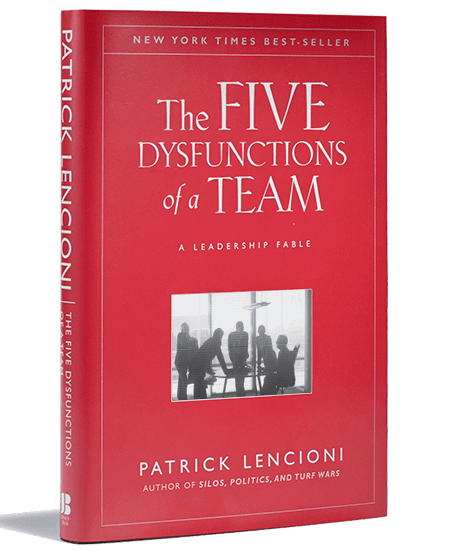We are doing a disservice to our future leaders: We grade them in school almost exclusively on their individual efforts, and then in the workplace we judge them almost exclusively on their ability to build and influence teams. The skills in the two areas couldn’t be more different. A huge factor in CEO success is how quickly he or she can create a highly functioning team. While hiring great people is a necessary step, it doesn’t ensure that the team will perform well.
 In his book “The Five Dysfunctions of a Team: A Leadership Fable,” Patrick Lencioni presents a model for building a successful team. What kills teams? According to Lencioni, the five dysfunctions are:
In his book “The Five Dysfunctions of a Team: A Leadership Fable,” Patrick Lencioni presents a model for building a successful team. What kills teams? According to Lencioni, the five dysfunctions are:
- Absence of Trust: The fear of being vulnerable with team members prevents the building of trust within the team.
- Fear of Conflict: The desire to preserve artificial harmony stifles the occurrence of productive ideological conflict.
- Lack of Commitment: The lack of clarity or buy-in prevents team members from making decisions they will stick to.
- Avoidance of Accountability: The need to avoid interpersonal discomfort prevents team members from holding one another accountable.
- Inattention to Results: The pursuit of individual goals and personal status erodes the focus on collective success.
The quality of the CEO makes a huge difference here. Those who understand and adhere to the five responsibilities of the CEO are in a better position to manage healthy executive teams. The building blocks for this are the concepts of credibility, competence, and caringthat are the foundation for leadership.
Regarding the first two dysfunctions, the CEO can build trust among teams and facilitate healthy debate with the right leadership style, approach, and abilities. For example, humility and openness to feedback in a CEO helps establish the trust and credibility needed to lead – and this behavior is contagious. Executives – and employees at all levels – pay close attention to actions such as how the CEO spends his time, who reports to him, and how he balances resources across the company.
The last three dysfunctions are within the purview of the CEO as well. This is where the “deliver performance” responsibility of the chief executive comes into play. The CEO sets the bar for performance in the organization. Only he can create a culture of accountability. This entails setting a compelling mission and vision. Then, the CEO should help executives create metrics that are important and relevant to the business. Each quarter the CEO and executive team should establish goals for the company, each department, and each individual employee.
The cornerstone of all this is consistent measurement. Holding all executives and employees accountable for achieving their goals will instill a commitment to high performance. The CEO should constantly drive and refine the operational metrics as well as verify performance.
I think companies should spend more time training their employees about how to succeed not only as team members, but also in developing and managing teams. I encourage you to read Lencioni’s work in this area. Also consult my book and this blog for more about recruiting and retaining talent.





0 Comments